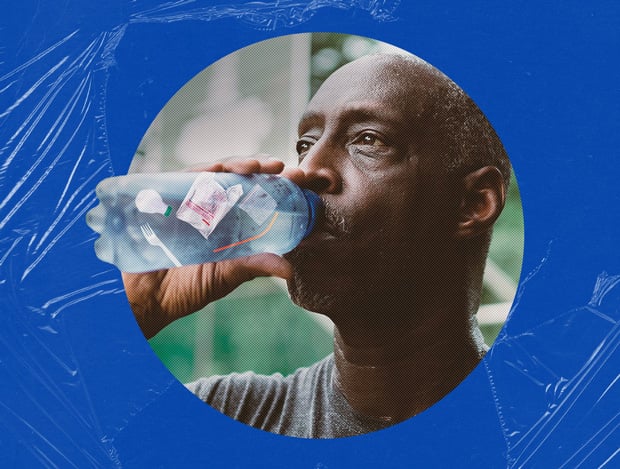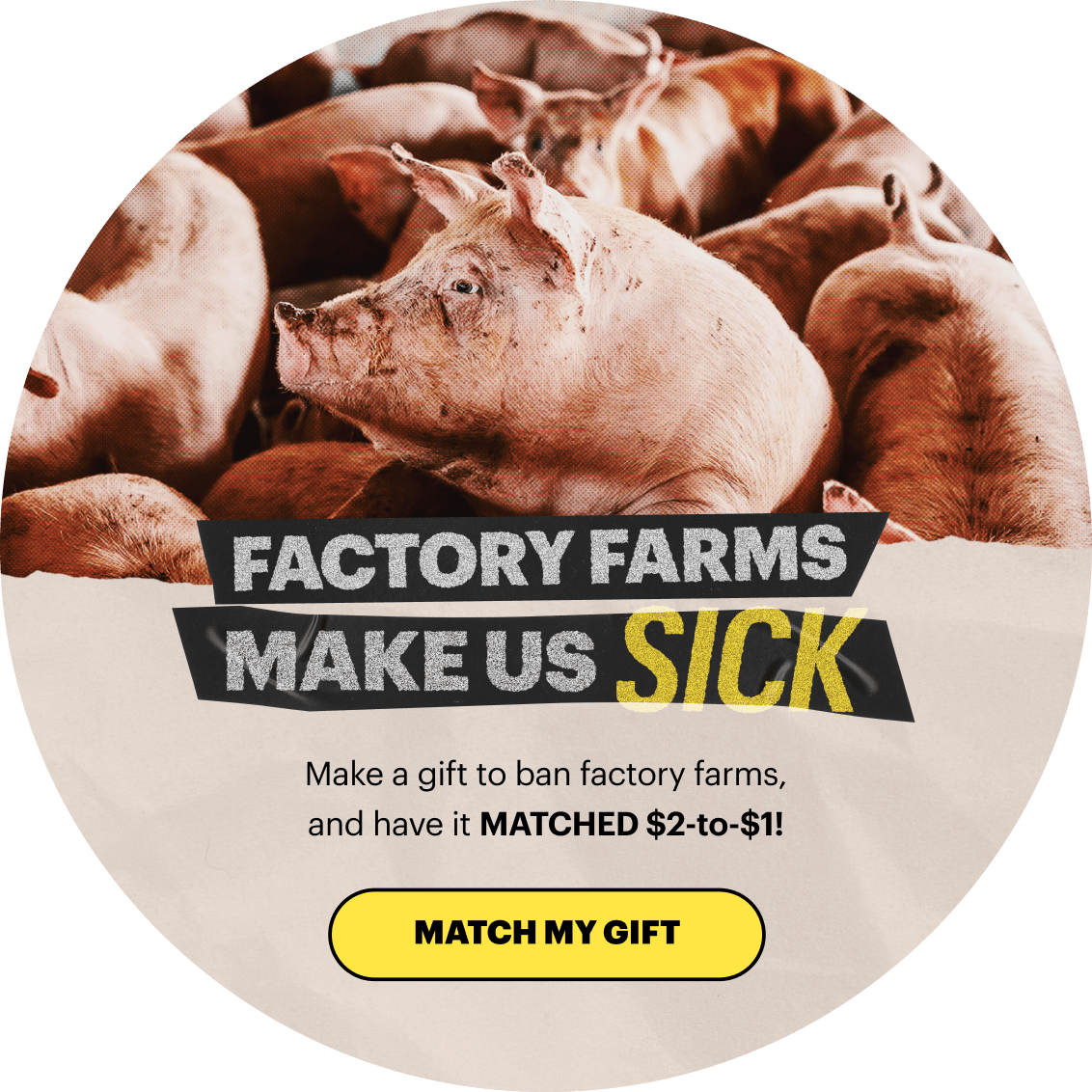How the History of Plastic Shapes Our Present and Future
Published May 9, 2024

To respond to the plastics crisis, we may find just as many answers looking backward as we do forward. At a recent event, sociologist Dr. Rebecca Altman explains.
As Dr. Rebecca Altman likes to say, plastic runs in her blood. In fact, it literally runs in the blood of many of us, as microplastic pollution has infiltrated our bodies.
But Rebecca has a closer relationship to plastic than most. In the 1960s, her father worked for Union Carbide making plastic at the start of the industry’s boom. Forty years later, she began studying the social history and legacy of chemistry, plastics, and pollution.
Since she began her work, the extent of the plastic industry’s harms has become shockingly clear. Many types of plastics are full of toxic ingredients, like PFAS “forever” chemicals. Every step of the plastic supply chain releases harmful pollutants that sicken nearby communities and contaminate their air and water. Disposable plastic has saturated our lives, releasing billions of micro- and nanoplastics into our environment.
The overflow of plastic is now an existential threat to our planet and all its inhabitants. But Rebecca’s research shows that, while it will be difficult, alleviating this crisis is possible. It requires massive collective action to stand up to powerful corporations and moneyed interests and push for the changes we need.
Thanks to your passion for our planet, Food & Water Watch is working to build that collective action. With your help, we’re fighting to stop the plastics pollution crisis.
At our Earth Week Livable Future LIVE event, Rebecca sat down with us to explain the history of the plastics industry and how we can use that understanding to chart the most impactful course forward.
How Plastic Became Everything, Everywhere, and Disposable
Drawing on the words of Dr. Sandra Steingraber, Rebecca says that when it comes to plastic, “We’ve become living scrolls; living archives of twentieth-century policy decisions about what is to be made and how it is made.”
Much of her research digs into those archives and the decisions that shaped them. She traces the web of politics, money, and history that created the plastics industry and all its attendant harms.
Today, 90% of plastics come from fossil fuels. But it wasn’t always that way. When the oil and gas industry began to grow, it found it had a lot of waste products on its hands. With plastics, it could turn that waste into cash.
First developed for use in war, fossil-based plastics were then enlisted for consumer products, from phones to furniture to cookware. Then, the industry began pushing disposable single-use plastics to wring out even more profits.
As Rebecca explains, plastics executives decided the future of their industry was “in the trash can” — literally. Making and marketing plastic as disposable would make it a cash cow, because consumers would always be buying more to replace what they’d tossed.
Now, 44% of plastics globally are single-use and destined for quick disposal. This onslaught of plastic trash is a major reason why the stuff contaminates our oceans, our soil, our air, our food, and our blood.
Revealing the Political and Cultural Forces Behind the Plastic Crisis
Over the years, much of the early resistance to single-use plastic and throwaway culture has been erased from the narrative. But initially, Rebecca said, it was difficult for corporations to convince people to throw plastic away. People fought against the idea of disposable plastics; the first plastic bag ban in the U.S. was attempted back in 1988 (and shot down by an industry lawsuit).
Along with this erasing of political opposition and cultural pushback, we have seen corporate narratives that tell us our individual choices matter most. But, as Rebecca pointed out, “It’s about phenomena that are happening at much higher levels of organization in terms of how our choices are shaped.”
The plastic industry has ballooned because of policy that made plastic cheap and plentiful. That includes tax breaks for manufacturing plants, subsidies for drilling and fracking, and more. At the same time, the plastic and fossil fuel industries deployed massive marketing efforts to shape what the public knew and thought about plastic.
Looking to the Past to Shape Today’s Movement
Without knowing the history, the course of the future feels inevitable. But in fact, we can change things. When we look to the past, we can see the true causes of the crisis, which in turn gives us the tools to fight it more effectively.
At the event, Rebecca was in awe at the progress the world has made since she began studying plastic twenty years ago. Back then, scientists and activists were focused mainly on littering and recycling. But now, the movement is highlighting the plastic industry’s harms at every step of the supply chain, from drilling to manufacturing to pollution.
Rebecca reflected on watching recent negotiations for a groundbreaking global plastics treaty. She was amazed to watch “this very reframe happen in real time: from thinking that plastics is just this waste issue to remembering that plastics is actually a human health and a human rights issue.”
This is all key to building the movement toward solutions, Rebecca said. “There are so many points of intersection to come together and amplify each other’s work. Whether you’re coming at this from the perspective of environmental justice and frontline communities, or climate, or biodiversity, or human health, or food and water safety — they’re all plastics issues, and that’s very clear.”
The more we pull these threads together, the bigger and stronger our movement grows. Together, we can build the people power necessary to pressure our leaders to act. We can overcome the plastics and fossil fuels industries and plug the flood of plastics into our lives.
Take a first step: Tell your representatives to support the Break Free from Plastic Pollution Act!
Learn More About the Past, Present, and Future of Plastics by Watching the Full Event
Check out the event recording to hear Rebecca discuss:
- How rubber, plastic’s precursor, set the stage for the economic systems and policies that would enable plastic’s rise;
- How plastic and PFAS were originally developed as tools of war, heavily subsidized by the U.S. government;
- How plastic production and similar industries are intertwined with colonialism, labor exploitation, and human rights abuses;
- How plastics endanger communities on the frontlines of production and disposal, including at plastic plants like that in Western PA;
- How taxpayer subsidies and government contracts have allowed the plastic industry to expand — and dump the costs onto families and frontline communities;
- How negotiations on the global plastics treaty are changing how governments think about plastics and the possibilities for regulating them; and
- How you can exert pressure to curb plastic production right now.
Resources Shared at the Event
- Read “Upriver,” Rebecca’s essay on the history and legacy of plastic.
- Read about the global plastics treaty and the United States’ role in it.
- Learn more about the fossil-fuel-to-plastic pipeline.
- Read about our fight against Shell’s plastic plant in Western PA.
- Learn what it’s like for communities living on the frontlines of plastic production plants.
- Check out FWW events near you, including events for our new Plastics Action team.
- Make a gift today to stop plastics at the source!


FACTORY FARMS MAKE US SICK
Make a gift to ban factory farms ~and have it matched $2-to-$1!
Enjoyed this article?
Sign up for updates.
TO TOP


